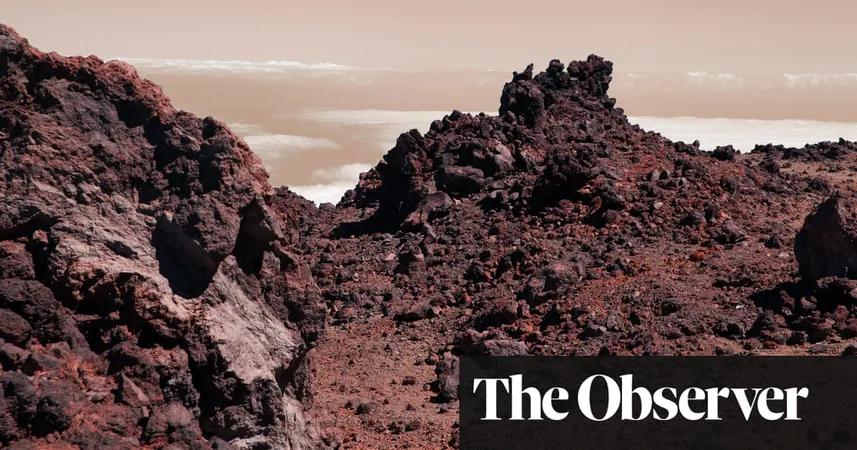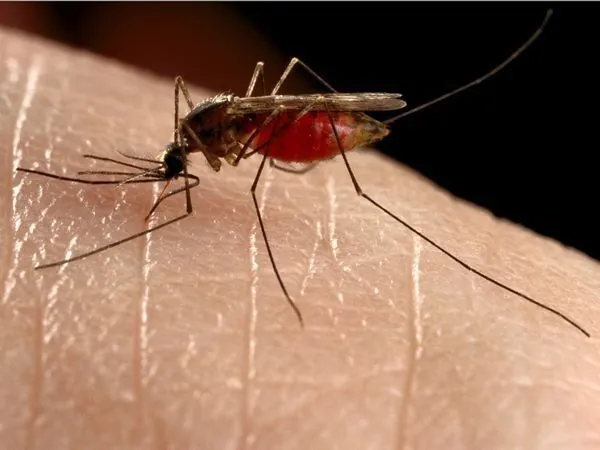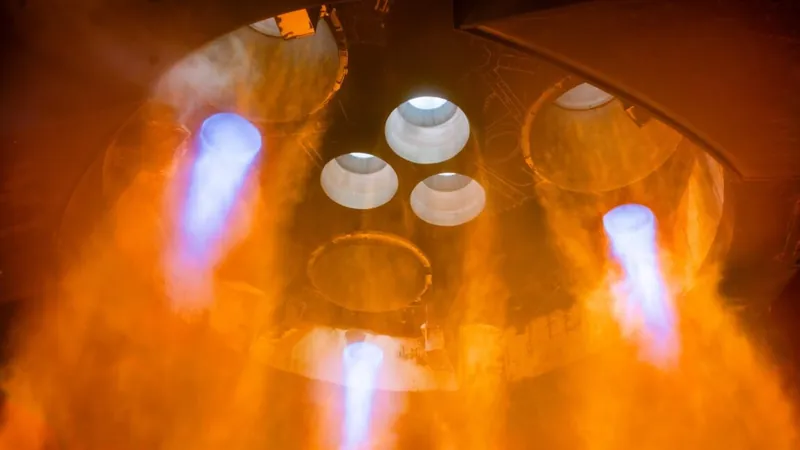
Asteroid Bennu: The Cosmic Messenger of Life’s Building Blocks
2025-04-20
Author: Sophie
A Cosmic Collision at the Dawn of Time
Billions of years ago, as our solar system was just taking shape, a watery, salty planet orbited the sun. In a catastrophic turn of events, this planet collided with another celestial body, shattering into fragments. One of these remnants became the asteroid Bennu, a treasure trove of vital minerals.
Astounding Findings from Bennu
Recently returned to Earth by the US space probe OSIRIS-REx, Bennu's mineral samples have stunned scientists. There were things in the Bennu samples that completely blew us away, exclaimed Prof. Sara Russell, a leading cosmic mineralogist at the Natural History Museum in London and a contributor to an important study published in *Nature*.
Unveiling the Building Blocks of Life
The upcoming exhibition, *Space: Could Life Exist Beyond Earth?*, launching on May 16, will present these exciting discoveries to the public. The exhibition highlights that while the elemental ingredients for life have been found in meteorites, Bennu stands out due to its abundance of these essential compounds.
As Prof. Russell describes, Its parent world clearly had underground lakes of brine. When these evaporated, they left behind salts resembling those found in Earth's own dry lake beds. In the samples from Bennu, researchers discovered phosphates, ammonia, and over a dozen amino acids, as well as the critical nucleobases necessary for RNA and DNA.
Asteroids: The Cosmic Deliverers?
Although scientists do not propose that life originated on Bennu itself, it's compelling to consider that asteroids like it may have seeded life on Earth. With a stable, warm environment, Earth fostered the first reproducing organisms over 3.7 billion years ago. Now, eyes are turned toward Mars and the icy moons of Jupiter and Saturn, like Europa and Ganymede, which may be harboring their own secrets. Upcoming missions, including a UK-built rover set to land on Mars in 2029, aim to delve deeper into these possibilities.
A Touch of the Extraterrestrial
Exhibition visitors will have the unique opportunity to touch samples of lunar and Martian materials, as well as a meteorite older than Earth itself. According to Sinead Marron, the museum's senior exhibitions manager, This is going to be a blockbuster.
The Surprising Return of Bennu Dust
OSIRIS-REx brought back 120 grams of Bennu dust, with about 200 milligrams allocated for study at the museum. Prof. Russell recalled the moment they opened the capsule, revealing a mix of black and white particles—initially thought to be contamination. Instead, they found a unique phosphorus compound crucial to life's development.
Signs of Life Beyond Our Solar System?
Last week, excitement surged as the James Webb Space Telescope reported chemical signatures on the exoplanet K2-18b, specifically compounds only associated with life on Earth. While these discoveries excite researchers, proving the existence of extraterrestrial life remains a daunting challenge.
Reflecting on the Possibility of Alien Life
The exhibition will provoke thought-provoking questions about how we might react to discovering life on other planets. Will we turn away? Attempt interaction? Or even consider consumption, like how we engage with life on Earth? These questions encourage us to reflect on our relationships with other life forms.









 Brasil (PT)
Brasil (PT)
 Canada (EN)
Canada (EN)
 Chile (ES)
Chile (ES)
 Česko (CS)
Česko (CS)
 대한민국 (KO)
대한민국 (KO)
 España (ES)
España (ES)
 France (FR)
France (FR)
 Hong Kong (EN)
Hong Kong (EN)
 Italia (IT)
Italia (IT)
 日本 (JA)
日本 (JA)
 Magyarország (HU)
Magyarország (HU)
 Norge (NO)
Norge (NO)
 Polska (PL)
Polska (PL)
 Schweiz (DE)
Schweiz (DE)
 Singapore (EN)
Singapore (EN)
 Sverige (SV)
Sverige (SV)
 Suomi (FI)
Suomi (FI)
 Türkiye (TR)
Türkiye (TR)
 الإمارات العربية المتحدة (AR)
الإمارات العربية المتحدة (AR)